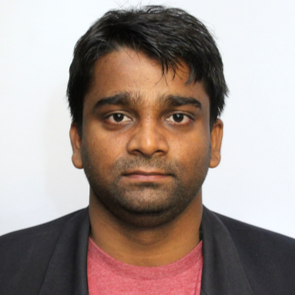
Dr. Satish Maurya
Department of Earth Sciences
smaurya [at] iitb.ac.in
About Me:
I am a geophysicist specializing in seismology, with expertise in passive seismic techniques including Seismic waveform modeling, Surface wave and Ambient noise tomography (ANT), Seismic interferometry, Receiver function analysis, Seismic anisotropy, and Geophysical inverse problems.
Seismological Laboratory:
Our research group focuses on high-resolution imaging of the crust and upper mantle using 3D anisotropic tomography, surface wave dispersion, and ambient noise methods. We employ advanced numerical techniques such as the Spectral Element Method (SEM), and recent working on integrates AI/ML-driven imaging and smart sensing technologies like ANT, Distributed Acoustic Sensing (DAS).
Our research laboratory is equipped with advanced facilities to support advance seismological research. We provide access to high-performance computing (HPC) resources, extensive broadband seismic datasets, and operate dense seismic arrays for high-resolution subsurface imaging. Which supports for studies the geohazard assessment, carbon capture and storage (CCS) monitoring, and critical mineral exploration. We provide hands-on training in seismic instrumentation, field deployment, seismic data analysis, advance inversion algorithm development, sub-surface modelling and computational disciplines.
I currently lead multiple research initiatives in lithospheric and near-surface imaging, landslide early warning systems, and passive seismic monitoring. I also mentor postdoctoral researchers, PhD scholars, and Master’s students in advanced geophysical imaging, data analysis, and instrumentation techniques.
Opportunity:
The Seismology Laboratory welcomes motivated and dedicated students to work on challenging problems in subsurface imaging, natural hazard monitoring, and next-generation geophysical applications. We seek individuals with a strong foundation in geosciences, programming, inversion theory, and AI/ML. Our goal is to nurture researchers who grow from team players into independent team leaders, contributing to cutting-edge advancements in geophysical science and technology that support national goals in energy resource development and natural hazard mitigation.
Research Area:
1. Shallow Sub-Surface Imaging
a) 3D/2D Seismic Ambient Noise Tomography: High-Resolution Seismic Imaging (order of 100’s meter) using ultra dense seismic from Distributed Acoustic Sensing (DAS). Fault Mapping, Reservoir imaging, Geotherm imaging etc.
b) Shallow sub-surface Imaging using body waves: Sub-basaltic Sediments mapping, Sedimentary basin and basement studies.
2. Crustal/Lithospheric Regional-to-Local Scale Imaging
a) Body waves and Surface waves seismic tomography: Barmer-Sanchor basin, NW-India, IGP, Himalayan Tibetan Plateau, NE India, Indian Ocean and Indian Plate.
3. Passive Seismic Monitoring
a) Low-Cost long-term CO2 storage site integrity monitoring.
b) Early Warning System for landslide.
I teach Postgraduate and Ph.D. courses in:
GP 403: Earthquake and Engineering Seismology
GP 407: Seismology Lab
GP 506: Geophysical Inverse Theory
GS 686: Introduction to Machine Learning in Geophysics
GP 827: Seismology and Earth Structure
- Associate Professor, IIT Bombay, [2024-Present]
- Assistant Professor, IIT Bombay, [2019-24]
- Post-Doc in Seismology; Supervisor: Prof. Barbara Romanowicz [2016-18], Seismological Laboratory, Department of Earth and Planetary Sciences, University of California, Berkeley, CA, USA;
- Ph.D. in Geophysics; Supervisor: Prof. Jean-Paul Montagner; [2012-16], Laboratoire de Sismologie, Institut de Physique du Globe de Paris, France.
- M.Sc. in Applied Geophysics [2009-11], Department of Earth Sciences, IIT Bombay, Mumbai, India
- B.Sc. (Hons.) in Physics [2006-09], Faculty of Sciences, BHU, Varanasi, UP, India
Post-doctoral fellows mentored
1. Dr. Ayush Goyal, 2022-24
Doctoral research supervision
1. Dr. Gundu Santhosh Kumar, 2018-23;
Title: Crustal scale radial anisotropic tomography beneath north-western India
2. Anurima Mishra, 2018-24; Co-Supervision
Title: Unveiling Crustal and Upper-most Mantle Structures Beneath the Central Himalaya, Tibetan Plateau, and North-East India through Surface Wave Tomography
3. Shubham Mishra, 2022-present;
Title: Integrated study of Landslide using Ambient Seismic Noise Continuous Monitoring and Remote Sensing Approach
4. Ritwik Mandal, 2023-Present;
Title: Crustal Scale Anisotropic Tomography of the Indo-Eurasian Collisional Zone
5. A. Manikho Rajina, 2023-Present;
Title: Shallow Crustal Structure of the Indian Continent Using Transdimensional Bayesian Inversion
1. Tiwari, S. H., Bagiya, M. S., Maurya, S., Heki, K., & Dimri, A. P. (2024). On the role of volcanic plume heights in excitation of free oscillations of the solid Earth and atmosphere: Case study. Advances in Space Research, 73(6), 2988–2998. https://doi.org/https://doi.org/10.1016/j.asr.2024.01.001
2. LeVeque, R. J., DePalma, R. A., Garrison-Laney, C., Maurya, S., Smit, J., & Richards, M. A. (2024). Possible Mechanisms for Tsunami-Like Surge Deposits Due To the Chicxulub Impact at the K-Pg Boundary at the Tanis Site, North Dakota. Journal of Geophysical Research: Solid Earth, 129(5), e2023JB027643. https://doi.org/https://doi.org/10.1029/2023JB027643
3. Goyal, A., Gowthami, B., Maurya, S., & Mohan, G. (2024). Shallow crustal imaging beneath NW Indian terrane from teleseismic P-wave coda using a Bayesian approach. Tectonophysics, 881, 230347. https://doi.org/https://doi.org/10.1016/j.tecto.2024.230347
4. Mukherjee, S., Ray, L., Maurya, S., Shalivahan, & Kumar, P. (2022). Nature of the lithosphere-asthenosphere boundary beneath the Eastern Dharwar Craton of the Indian Shield. Journal of Asian Earth Sciences, 227, 105071. https://doi.org/https://doi.org/10.1016/j.jseaes.2021.105071
5. Nayak, S., Bagiya, M. S., Maurya, S., Hazarika, N. K., Kumar, A. S. S., Prasad, D. S. V. V. D., & Ramesh, D. S. (2021). Terrestrial Resonant Oscillations During the 11 April 2012 Sumatra Doublet Earthquake. Journal of Geophysical Research: Space Physics, 126(12), e2021JA029169. https://doi.org/https://doi.org/10.1029/2021JA029169
6. Maurya, S., Taira, T., & Romanowicz, B. (2019). Location of Seismic “Hum” Sources Following Storms in the North Pacific Ocean. Geochemistry, Geophysics, Geosystems, 20(3). https://doi.org/10.1029/2018GC008112
7. Garber, J. M., Maurya, S., Hernandez, J.-A., Duncan, M. S., Zeng, L., Zhang, H. L., et al. (2018). Multidisciplinary Constraints on the Abundance of Diamond and Eclogite in the Cratonic Lithosphere. Geochemistry, Geophysics, Geosystems, 19(7), 2062–2086. https://doi.org/https://doi.org/10.1029/2018GC007534
8. Mazzullo, A., Stutzmann, E., Montagner, J.-P., Kiselev, S., Maurya, S., Barruol, G., & Sigloch, K. (2017). Anisotropic Tomography Around La Réunion Island From Rayleigh Waves. Journal of Geophysical Research: Solid Earth. https://doi.org/10.1002/2017JB014354
9. Nita, B., Maurya, S., & Montagner, J.-P. (2016). Anisotropic tomography of the European lithospheric structure from surface wave studies. Geochemistry, Geophysics, Geosystems, 17(6). https://doi.org/10.1002/2015GC006243
10. Maurya, S., Montagner, J.-P., Kumar, M. R., Stutzmann, E., Kiselev, S., Burgos, G., et al. (2016). Imaging the lithospheric structure beneath the Indian continent. Journal of Geophysical Research: Solid Earth, 121(10). https://doi.org/10.1002/2016JB012948
